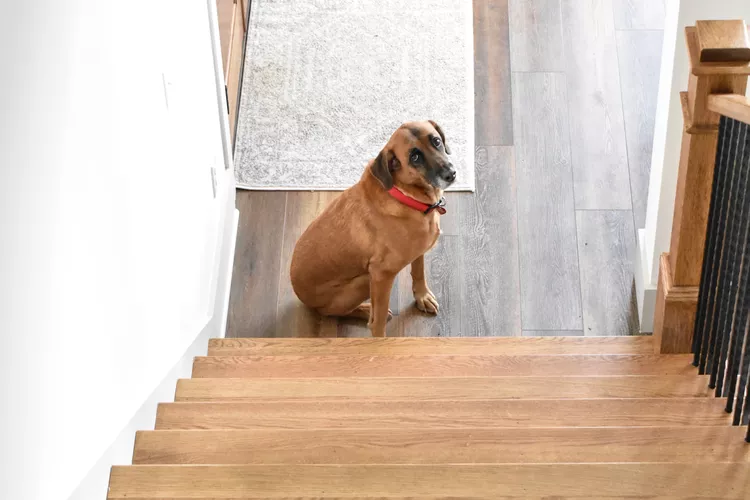What to Do When Your Dog Is Afraid of Stairs

Is your dog afraid of the stairs? Some dogs are afraid of going up and down stairs. This is a fairly common fear or phobia, especially in young dogs who may not have encountered them while they were puppies. Fortunately, you can help your dog get over this fear and go up and down the stairs with confidence. Here's what you need to know if your dog has a fear of the stairs.
Rule Out a Medical Condition
Before you begin searching for behavioral issues that may cause a dog's fear of stairs, talk to your veterinarian. Your dog's fear may stem from a physical problem. He may not want to go up and down the stairs because it causes him pain (in cases of arthritis or an injury). Have your veterinarian rule out a medical condition before you start any training.
Why Your Dog is Afraid of Stairs
Many dogs who are afraid of stairs develop the fear because of a lack of early exposure. If you live in a single story home, it's possible that your dog won't see stairs until a little later in life. Some dog owners may have discouraged their puppies from going on the stairs to keep them contained to a limited area.
In some instances, a dog may develop a fear of stairs from a traumatic experience. For example, a dog who falls down the stairs may be left with a phobia of climbing stairs.
Overcoming a Fear of Going Up and Down Stairs
Most of the time, a dog's fear of stairs is easy to overcome. The following tips can help you navigate the process:
- Clear off the steps. Make sure there is nothing on the stairs that your dog can trip over or knock over. Being startled in this manner could cause a major setback in your training. If your stairs are particularly narrow or tall, you may want to find a short, wide staircase in a park or other area that your dog can practice on without feeling so boxed in.
- Distract the fearful dog. Rather than making a big deal of trying to force your dog up and down the steps, you can try tricking it into going up or down by distracting him a little. Pat your hands against your legs, talk to your dog in a happy tone and give it lots of attention. Take a step up one step and then back down as you continue the happy talk. Sneak in a few of your dog's favorite treats here and there. Next time go up a few steps and back down. For a mild phobia, you may be able to get the dog to follow you up and down a few steps without even realizing it. If you manage to get the dog on the steps, be sure to give lots of praise and some treats. Gradually work on coaxing the dog a little further each time.
- Take it one step at a time. An entire staircase might be too much for your dog to handle, but chances are it'll be okay with one. If its fear is mild, just pick your dog up and put it on the first step. Wave a few treats in front of its nose, and lure it down the step. Again, use lots of positive reinforcement for encouragement. Once your dog is comfortable with a single step, move it up one more, and lure it down with treats. In this manner, you should be able to gradually get your dog comfortable with navigating the stairs.
- Reverse it to go up the stairs. You can do the same steps as above to teach your dog to go up the stairs. Start by giving it treats when it is at the bottom of the stairs. Next, toss a few treats on the bottom step. Once your dog is comfortable taking those treats, toss some treats on the next step. Gradually work on getting your dog to step up the stairs to get the treats. Before you know it your dog will be navigating the stairs like a pro!
Remember to be patient with your dog. Depending on its level of fear, it may take some time for it to get comfortable with the stairs. Work in short, upbeat training sessions. If your dog seems overwhelmed, frustrated, bored, or stressed, it's time to end the session. Always try to end on a positive note. If you find that your dog's phobia is too intense to overcome, it's a good idea to seek help from a dog trainer or behaviorist. You can ask your vet for recommendations to help you find the right professional.
Edited by Jenna Stregowski, RVT